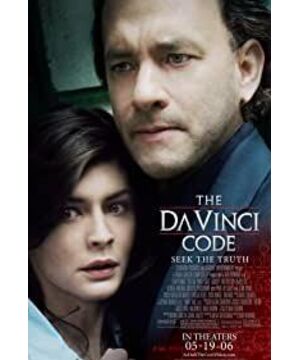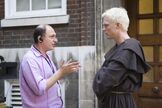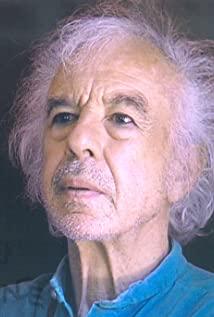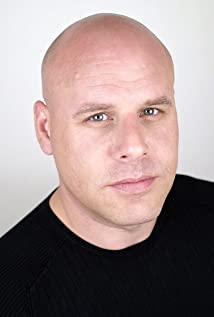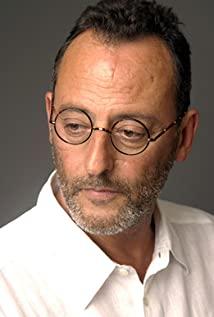Da Vinci Code
Leonardo da Vinci Leonardo da Vinci, one of the three masters of the Renaissance (the other two are Michelangelo and Raphael), is estimated to be the most studied and The most prestigious one. At the same time, his name was used to name the international airport in Rome. There are quite a few airports named after people, but most of them were Charles de Gaulle and Kennedy. This shows how important Da Vinci is.
Although it is said that Da Vinci is gay and has an Oedipus plot, it does not prevent him from being respected by people. Although his achievements are many and many, it is said that even the helicopter was created by him. But he is probably best known for his two paintings. One "The Last Supper", one "Mona Lisa". The former was painted in a monastery in Milan. When I was a child, popular science books often depicted the popular painting method called wet painting, but Da Vinci chose to use dry painting when he wanted to paint this. Down, he started to fall off before he died. The latter is kept in the Louvre in Paris. If I remember correctly, this painting should be the only painting in the Louvre separated by glass. And the glass is weird, no matter what angle you take the photo from, it's all blurry.
I don't know how many identities Da Vinci had, but the elders of the "Hanshan Yin Recession" believe that people in the world have heard of it for the first time. The reason why he has such an identity is because he wants to protect a secret. What's the secret? Quite simply, have you seen the first episode of Indiana Jones?
They were looking for something called the Holy Grail. According to legend, this is called the Holy Grail, which is the cup that Jesus drank at the Last Supper. It is said that this cup has the functions of healing and resurrecting the dead. However, some people found that there is actually more than one cup in this mural, so the so-called Holy Grail is not actually a cup, but represents "Jesus is actually a mortal, marrying a wife and having children". (The person who discovered this secret was because he saw the buttocks of Jesus and St. John in the fresco, with a V in the middle, and St. John looked very much like a woman.) The church should not let such a secret spread to the world, so Do everything possible to destroy the evidence, which is to kill Jesus' wife. The Suanshan Priory wanted to protect her, and when she died, she had to protect her body, which was passed down from generation to generation. Except for Leonardo Da Vinci, almost all of his leaders are shocking names: Hugo, Debussy, Newton, Botticelli... It has been passed down to this day, and the current elder is the Louvre Museum. The curator, the curator was killed one night. Before he died, he took off his clothes, put on another sketch of Da Vinci's "Vitruvian Man", and wrote a lot of passwords next to his body Ah, letters, sequences, things like that. These things attract the head of the police in Paris, a semiotician, a woman who breaks codes (actually his granddaughter, but has not spoken for a long time). So, in the remaining 24 hours, there are three stories going hand in hand, one is that semiologists and female agents decipher one by one according to the codes left by the curator, looking for something step by step. A group of people headed by the head of the Paris police were chasing the two men frantically. The three were an albino named Silas (he had nails in his legs and he kept beating himself) who kept killing people and kept looking for something. And he kept talking to his master, who belonged to a strange organization called Opus Dei, and it seemed that the master himself had to listen to someone called a mentor. These three stories are like pieces of a puzzle, let's piece together slowly. In the end, these three clues finally came together, giving people a sudden realization: all people are looking for Holy Grail, of course, has a different purpose, semioticians and female agents are forced, but also curious. The police chief thinks he has a good sense of justice, but he is also a type of being used. The master of the ministry and his subordinate vernacular patients are naturally representing the interests of the church to destroy the Holy Grail, but they are also being used. The real mastermind behind the scenes is A self-confessed old friend of semiotics. A lot of people died, a lot of people were injured, there were a lot of interesting riddles and codes, and it went from Paris to London. It was not until the end that a semiotician alone discovered the truth of Holy Grail. In fact, this thing was placed under the eyes of the curator, the Louvre Museum in Paris.
The above is the novel "The Da Vinci Code", which has been popular all over the world since 2003. It has never been in the top ten bestseller lists for more than two years. The author instills a whole lot of religion, history, literature, painting, and theology in the book, which is almost ostentatious. . . . . . The knowledge of the book is thrilling and eye-catching, but at the same time, it is also criticized by real scholars as people who like this book are uneducated people, and it is because of the few books that they are so easily convinced. There are almost as many fans and opponents of this book in the world, and it seems to have caused protracted discussions and disputes.
Recently, the dispute seems to have reached a climax. That's because from May 19, the movie version of "The Da Vinci Code" has been released worldwide (as if China was a little earlier). The film gathered a large number of stars, Tom Hanks, Audrey Tatu, Jean Reno. It is estimated that these few people exist, whether they are fans of the book, opponents, or even people who have never read the book, they will go to the cinema to watch it. After Sophie Marceau's "The Phantom of the Floating Museum", this should be the second film that can be shot in the Louvre Museum, so it is also a gimmick. But Lao Tang seems to be getting fat and getting old. Although it is rumored that he lost weight for a long time to make this film, it is still very different from the imagination of many MMs about the handsome and suave image of semiotics. Audrey MM was the dream lover of many people when she was filming "Amelie", but now she also wears a suit, keeps her long hair, and doesn't smile for a long time. Lao Lei's beard is the same as always, but I have to say, this Frenchman's dress taste is a bit poor.
Those who are arguing are still arguing around the movie or the book. In fact, there is no difference. The movie is still very loyal to the original book. It's just that there are many people who haven't read the book complaining that they can't understand it, and they are disappointed when others say how to look good. Due to the limitations of the film's space and the way of expression, many exciting plots cannot be shown in the book, such as the grievance between Silas and Bishop Allinge, the conspiracy of Teabing, the growth of Sophia and the misunderstanding between Sauniere, All lack the necessary explanations, so the plot development of the film makes people seem abrupt. Including the various processes of unlocking the password, it is too simple in the movie. But the movie also has its advantages. For example, in "The Last Supper", how St. John became Mary and leaned on Jesus' shoulders is very vivid with animation technology, which we never understand when we read novels.
When the author was writing the novel, he had to explain the Priory of Suanshan and Opus Dei in the front, which was omitted in the movie, so it is no wonder that people were confused. Moreover, the author's way of writing is like in a serial, ending abruptly at the most fascinating time and then adding another chapter. Of course, the movie can't be made like this, otherwise it will become a series. So it makes sense that watching movies is not as enjoyable as reading novels. It seems that some media have created a movie viewing manual specially for people who have not read novels to go to the movies, briefly introducing some key terms. The effect is unknown. I think it will be more confusing.
To conclude, I would like to explore the author's motivation for writing this book. Is it really to shake the spiritual foundation of Christianity for thousands of years and make hundreds of millions of believers feel the pain? I don’t think so. The author wants to tell all religious believers that they must have a correct understanding of their beliefs and have the ability to protect the truth they identify. Because from the historical development law, divinity will be diluted to human nature. Thousands of years of spiritual beliefs must have constant scientific cognition and improvement in order to support their future path. Humans are always small and fragile in front of the universe. When the semiotician Langdon finally found the Holy Grail in the Louvre and rested under the starry sky, he involuntarily knelt down...
I don't believe in Jesus, but when I went to the Louvre, I specifically went to find that little boy. The pyramid, unfortunately, was not found.
P. S: The author also has three novels, "Digital Castle", "Angels and Demons", and "Trap", among which "Angels and Demons" is absolutely praised. Those five strange symbols that can be read both positive and negative will make you wonder what a miracle is. There's also a Killer Code, but I suspect it's a fake. PS here stands for
p.s. postscript, not Princess Sophia. ^_^
To add a little more about Christianity:
1. Originated in the Palestine area in the 1st century 2. In the
11th century, with Rome and Constantinople as the centers, it was divided into Catholicism and Orthodoxy
3. In the 16th century, Western Europe appeared against the Pope During the Reformation, many new denominations emerged, collectively known as Protestant Christianity. So far, Christianity has officially split into three major denominations: Catholicism, Orthodox Christianity, and Protestantism.
4. In Chinese titles, Protestantism is often referred to as Christianity, which often leads to misunderstandings.
5. Jesus is the image of the savior in Christian legends. God once appeared in Bethlehem, Palestine, and caused Mary (later called the Virgin) to conceive and give birth to Jesus. When Jesus grew up, he had supernatural powers, able to bring back the dead, exorcise demons, and recruit 12 disciples, and his influence was growing day by day. He was hunted by the Roman magistrates. He was crucified on a Friday because of the betrayal of his disciple Judas. He was resurrected three days later, and soon ascended to heaven. Christianity claims that Jesus' death was a suffering for mankind.
6. Christianity has six basic doctrines: the Trinity, God's creation, original sin, redemption, heaven and hell, and patience and obedience
. 7. The Bible is actually two books. The Old Testament and the New Testament. The Old Testament, also known as the Book of Moses, is the same book as the Holy Book of Judaism. The New Testament is also called the Gospels. There are many versions and interpretations.
View more about The Da Vinci Code reviews


